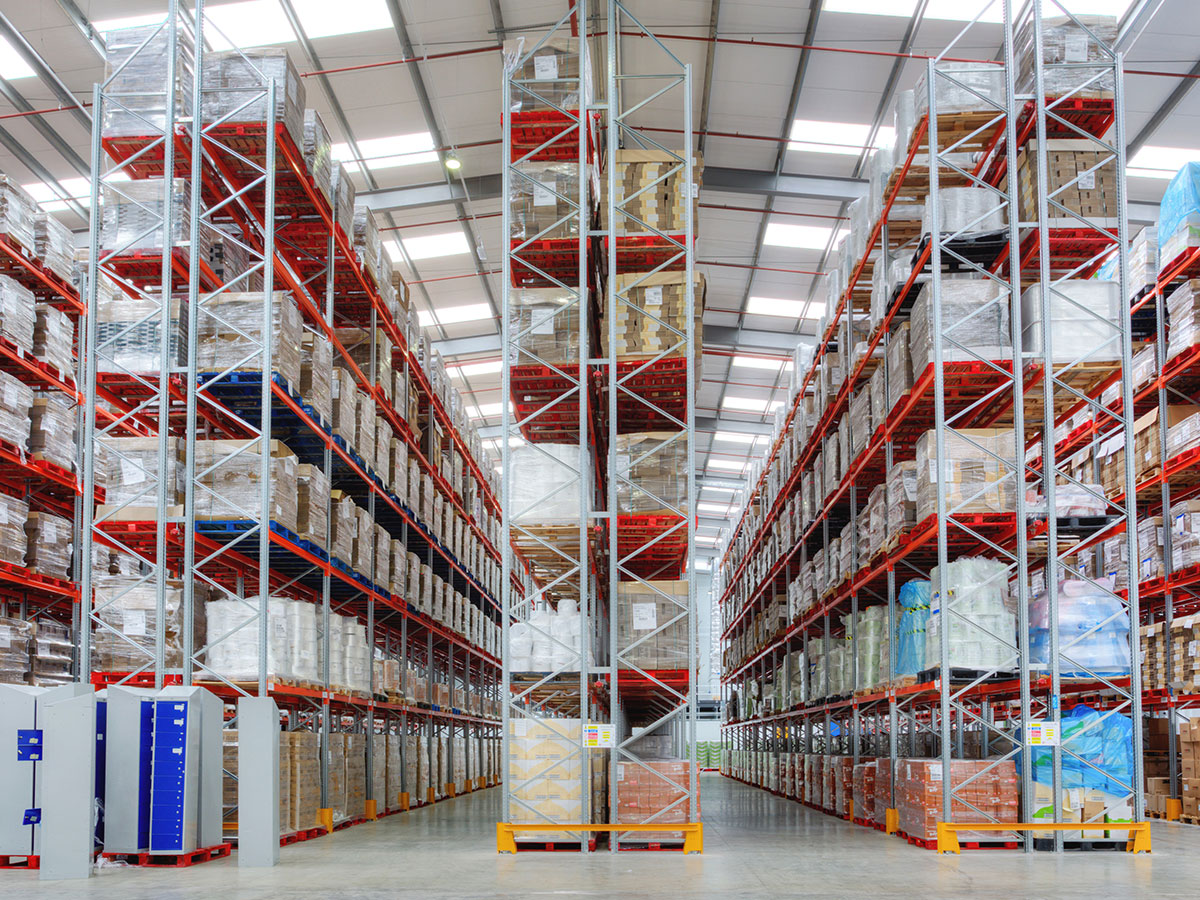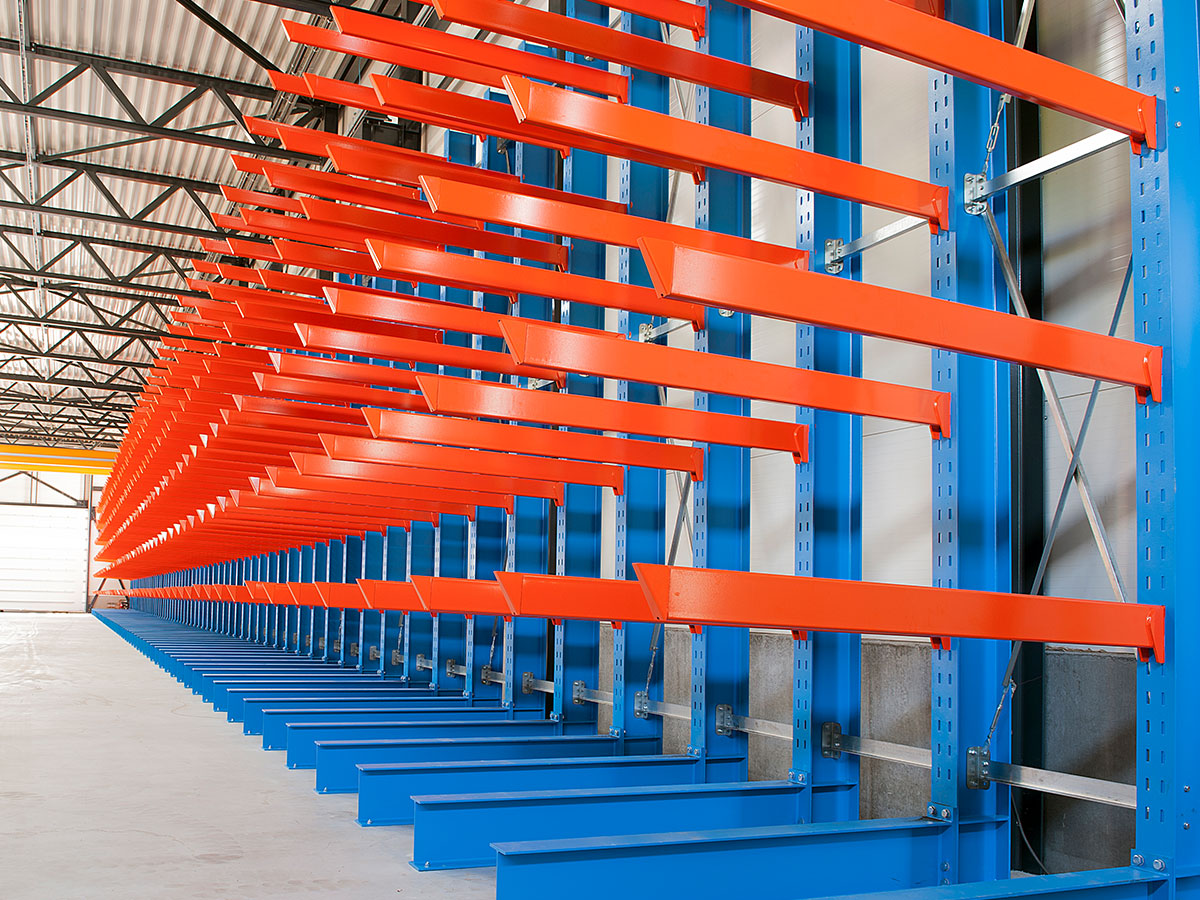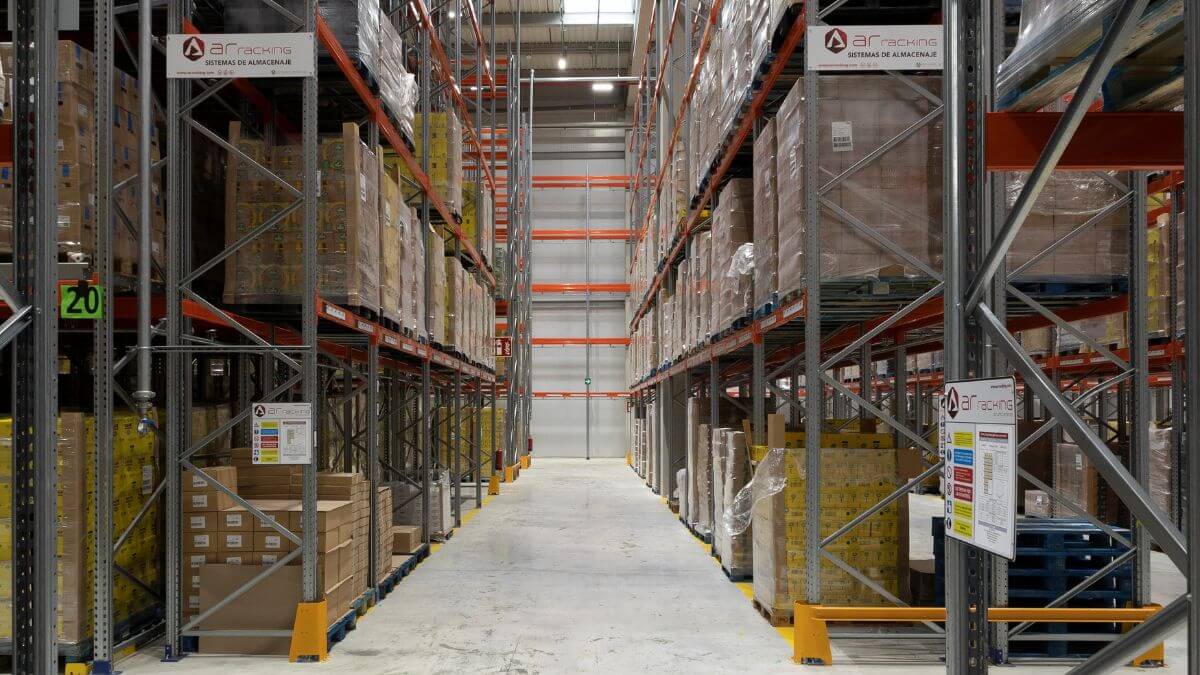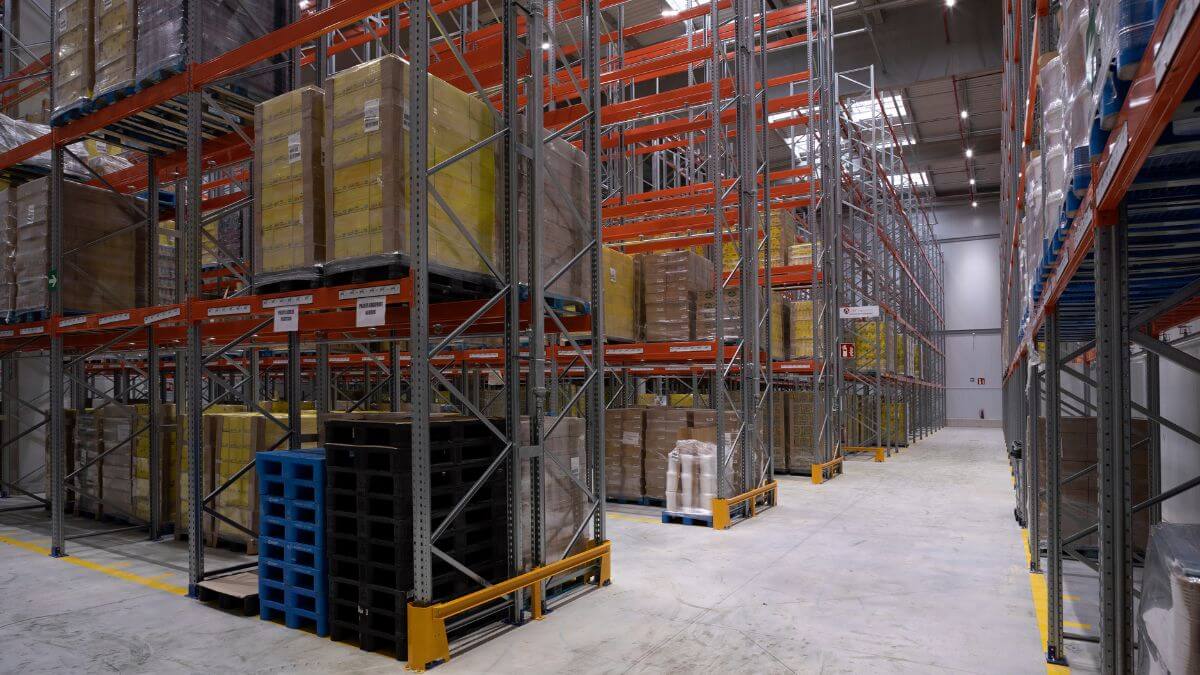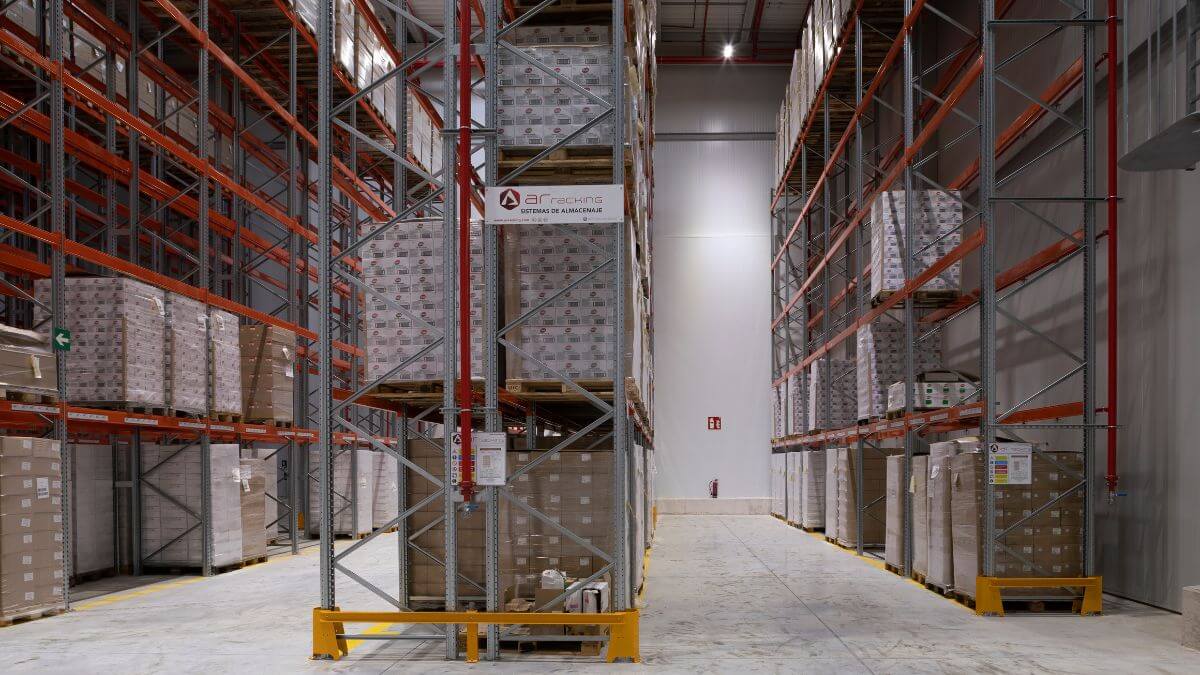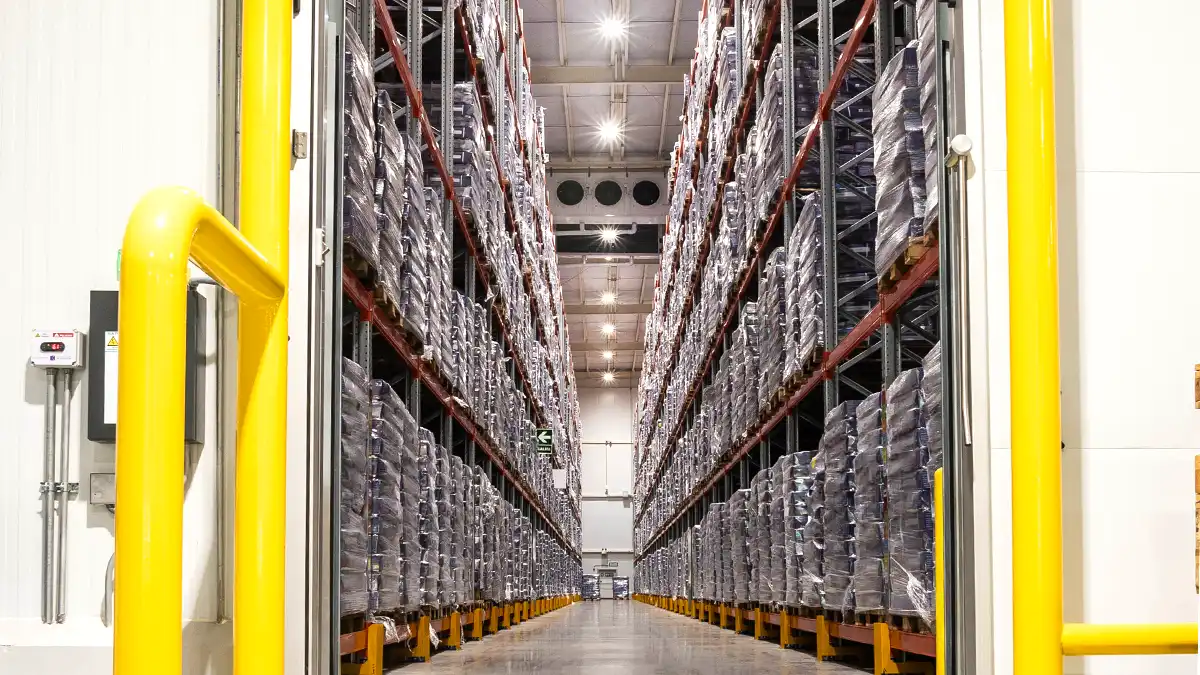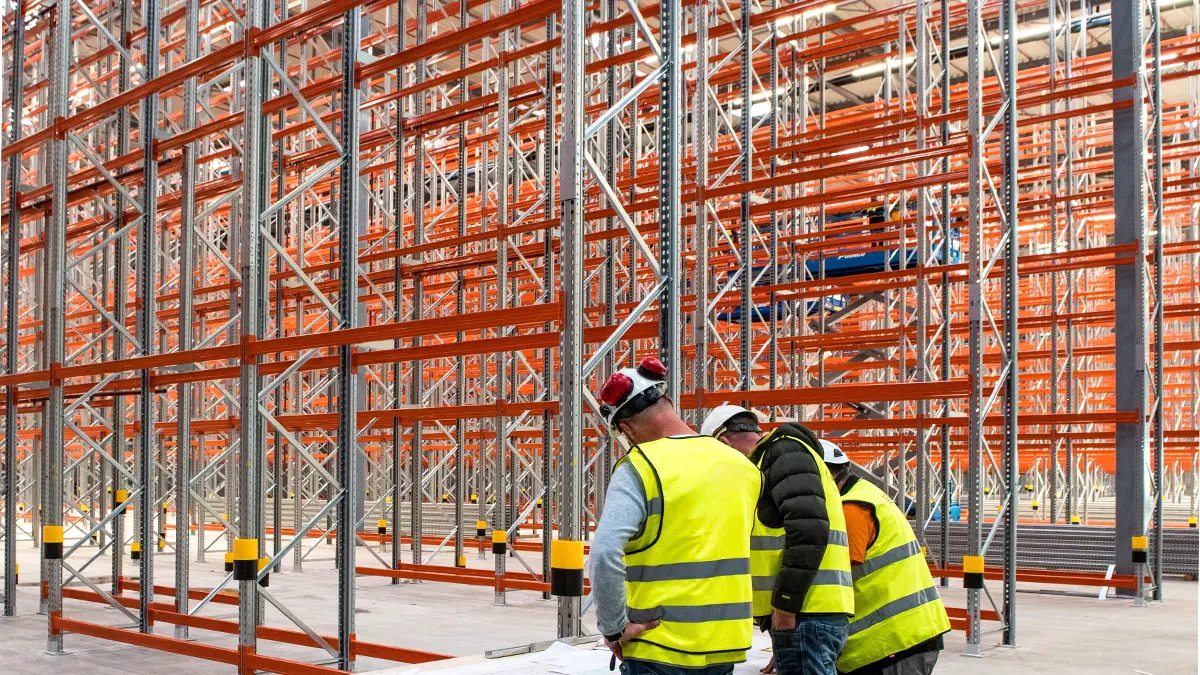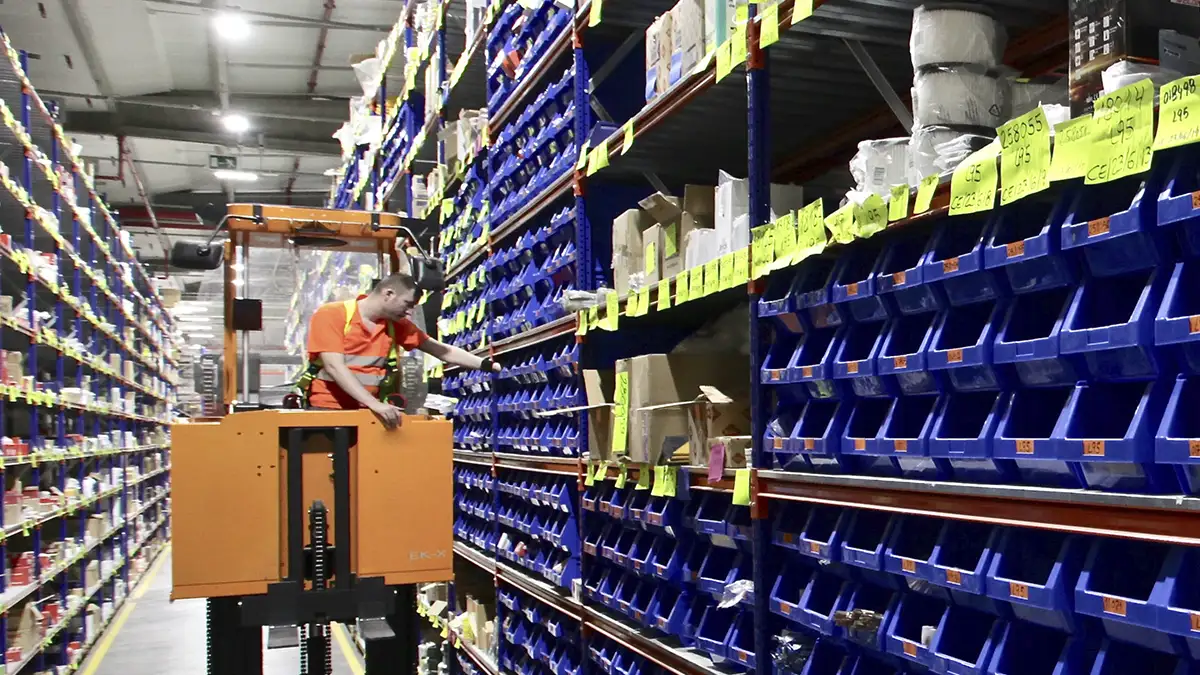In the logistics field, the interaction between the warehouse and logistics is of vital importance. It is important for various reasons, but in general, storage operations directly influence the quality of orders and transport, and will therefore determine a large part of the entire logistics process. This dynamic is known as warehouse logistics, and plays a key role in supply chain management.
What is storage logistics?
Storage logistics is the process of managing the receipt, storage, control and distribution of products within a warehouse.
It not only involves the use of appropriate facilities and equipment, such as the storage systems, but also the implementation of methodologies and technologies that allow an organised and efficient work flow.
This global approach is fundamental to reduce costs, minimise errors and improve deadlines, critical aspects in business competitiveness.
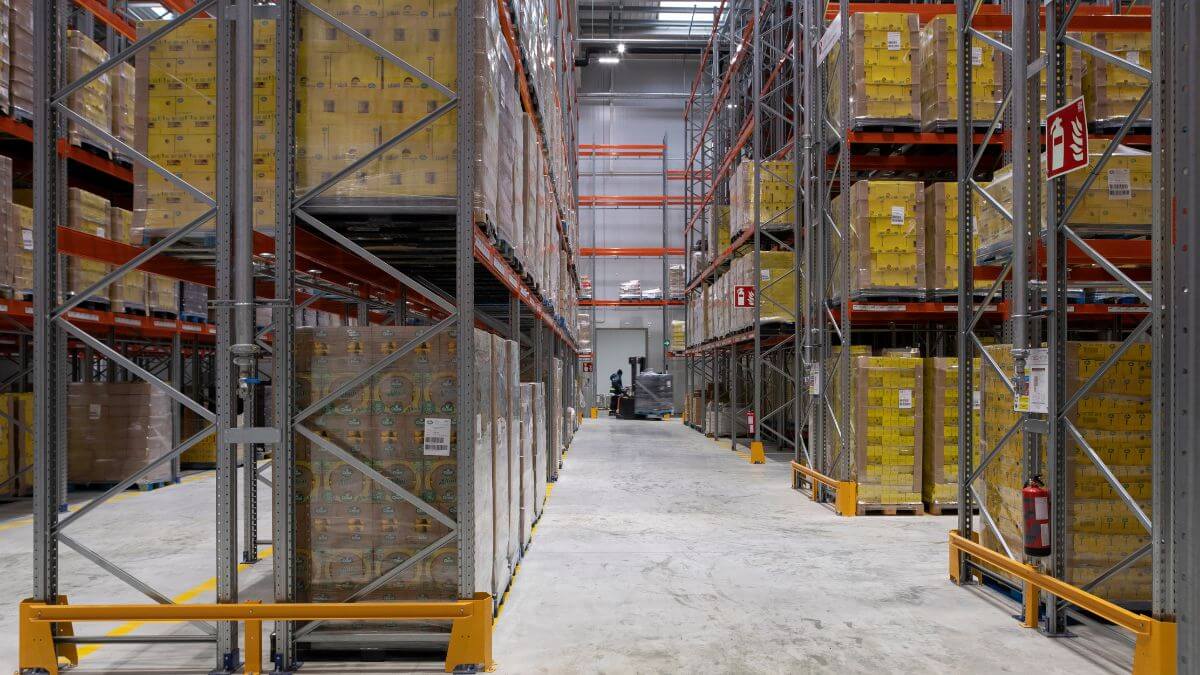
Storage logistics functions in the supply chain
The relationship between the warehouse and logistics is of vital importance since the warehouse performs numerous functions to ensure the proper functioning of the entire supply chain.
Some of the key functions of warehouse logistics are as follows:
Supply of goods
In addition to being aware of and managing the receipt of goods, it is vital to be able to receive and store products in optimal conditions for their proper preservation.
Checking goods
Apart from receiving goods, warehouses should verify that the delivery notes received are as expected.
Inventory cataloguing
Once the warehouses have verified and certified that the goods received are correct, they are catalogued and subsequently inventoried, which allows the location of each product to be known and facilitates quick and direct access to them.
Storage and preservation
While the goods are in the warehouse, it must provide the appropriate conditions for their storage and preservation as well as ensure optimal safety conditions for this.
Order preparation
The warehouse is the starting point for product shipment, but before this, it is important to prepare the products according to each customer’s needs and demands. This order preparation task is also the responsibility of the warehouse. This process is fundamental in the relationship between the warehouse and logistics, since it marks the start of the distribution of the product once the sale has been completed.
Order dispatch and shipping
Finally, another of the functions of warehouse logistics is the shipping of pre-prepared orders, which are dispatched from the warehouse to the customer, starting their delivery route.
Types of storage logistics
There are different types of storage logistics according to the company’s specific needs, type of products handled and market demand. Some of the most common ones are described below:
Centralised storage logistics
This approach involves concentrating inventory management in a single facility. Companies that use this model can benefit from improved goods control, as well as reduced operating costs.
By centralising storage, it is easier to implement inventory management systems and standardised processes. This type of logistics is ideal for organisations with a high order volume and a large distribution area, since it allows the optimisation of space and labour.
Decentralised storage logistics
In this model, companies distribute their inventory in multiple warehouses located in different regions. This allows them to quickly respond to local needs and reduce delivery times. Decentralised logistics is especially beneficial for companies that operate in large markets with high regional demand, since it facilitates order management and improves customer satisfaction by reducing transport times.
Traditional storage logistics
This model uses traditional systems and processes to manage inventory, which can include adjustable pallet racking and traditional handling equipment. Although this approach may require less investment for its implementation, it can also be less efficient in terms of space and time. Traditional logistics is suitable for companies that handle a moderate volume of products and that can benefit from a simpler storage structure.
Automated storage logistics
This approach uses advanced technology and automated systems to manage product storage and retrieval. Automated storage systems allow more efficient and accurate inventory management. Automated logistics is ideal for companies that handle large product volumes and that require fast-moving inventory, since it reduces handling times and improves productivity.
Cold or freezing storage logistics
This model specialises in storing products that require specific temperature conditions, such as perishable foods, pharmaceuticals or sensitive chemicals. Cold storage facilities are equipped with refrigeration systems that ensure the products are kept at suitable temperatures. This type of logistics is crucial for the food and pharmaceutical industries, where product quality and safety are paramount. The installation of storage systems that properly adapt to these temperature-controlled environments is one of the key elements in the supply chain.
Just-in-Time (JIT) storage logistics
This approach is focused on minimising inventory stored and coordinating product delivery as soon as the products are necessary in the production process or to fulfil an order. The JIT methodology seeks to eliminate wastage associated with excess inventory and storage costs. This type of logistics requires exceptionally accurate planning and communication with suppliers and manufacturers, but may result in significant cost savings and greater operating agility.
Storage logistics by projects
This is a common model in very specific industries that manage large projects, such as construction or engineering. In this approach, storage is organised according to the specific requirements of each project, which includes the management of materials, equipment and supplies. This type of logistics requires a detailed planning to ensure that all the necessary elements are available at the right time.
Multichannel storage logistics
With the growing importance of e-commerce, many companies are implementing storage systems that can handle multiple sales channels. This means that the products can be sent directly to end consumers, physical stores or distributors, as required. This approach requires a seamless integration of processes and systems to efficiently manage orders from different sources.
Benefits of Implementing Storage Logistics
Implementing efficient storage logistics has a series of key benefits that can positively impact a company’s profitability and competitiveness.
Some of these benefits include:
Resource optimisation
A system of well-designed storage logistics maximises the use of space and labour, reducing operating costs. Proper warehouse organisation enables quick access to products, which reduces search and handling times.
Reduced delivery times
Order preparation and storage logistics efficiency allows companies to meet shorter delivery times, resulting in greater customer satisfaction. A fast and reliable delivery service is a key factor for increasing customer loyalty.
Accurate stock control
Implementing advanced technologies and effective inventory management practices helps companies to keep an accurate record of their stock. This reduces the risk of stockout or overstock, optimising the capital invested in inventory and improving profitability.
Flexibility and adaptability
Well-structured storage logistics allows companies to quickly adapt to changing market demand. This is essential in dynamic commercial environments, where trends can change rapidly. The ability to scale operations or adjust storage to specific needs provides a competitive advantage.
Improved traceability
With a good storage logistics system, companies can track the location and status of their products in real time. This improves supply chain visibility and facilitates the management of incidents, returns and complaints.
Sustainability
Optimisation of storage logistics can also contribute to more sustainable practices. Reducing inventory and making efficient use of space can lead to a lower carbon footprint and less waste, benefiting both the environment and the company’s image.
In conclusion, storage logistics is an essential component for any organisation that wants to operate efficiently and competitively in today’s market. With the right approaches and benefits, companies can improve their performance and offer an exceptional service to their customers.
At AR Racking, we are committed to providing storage solutions that optimise every aspect of logistics, helping our customers to succeed.




